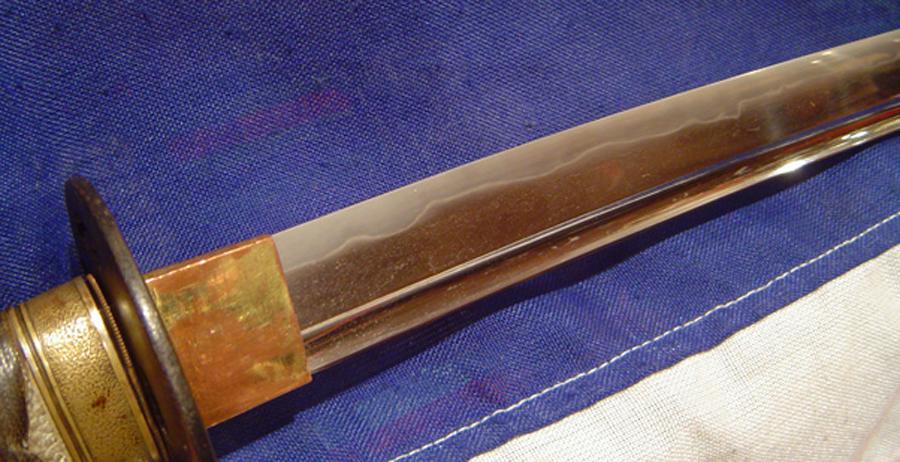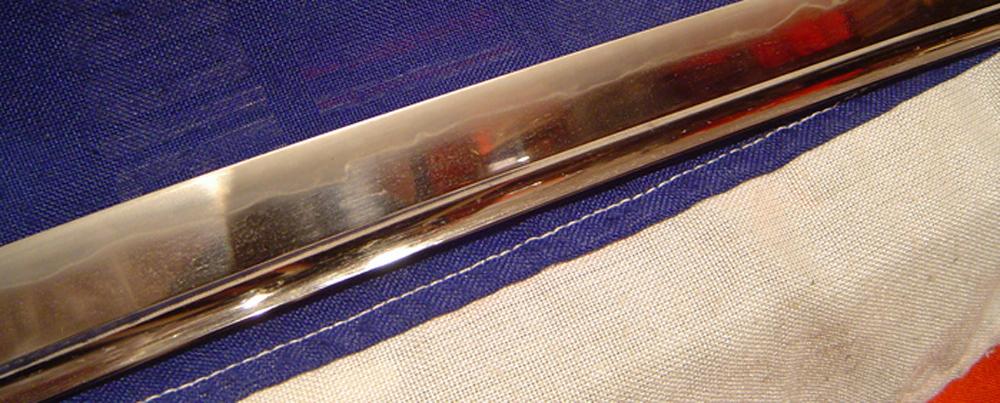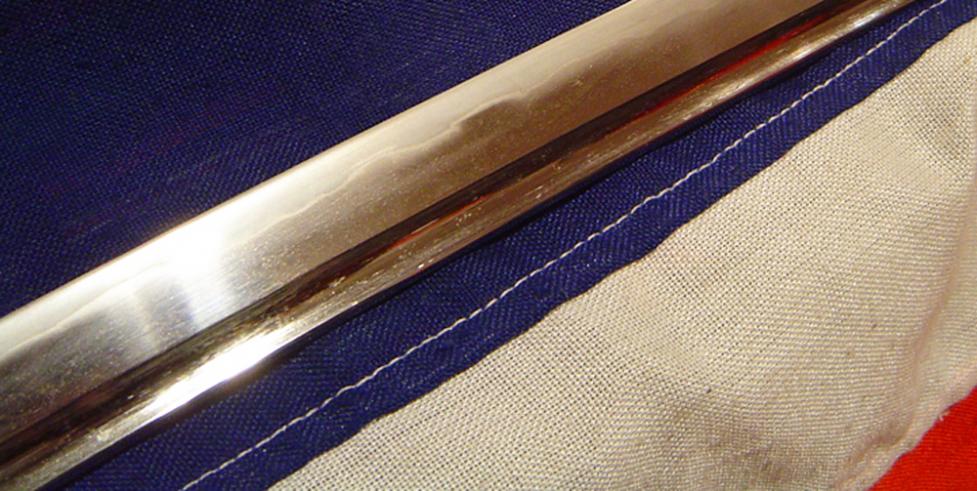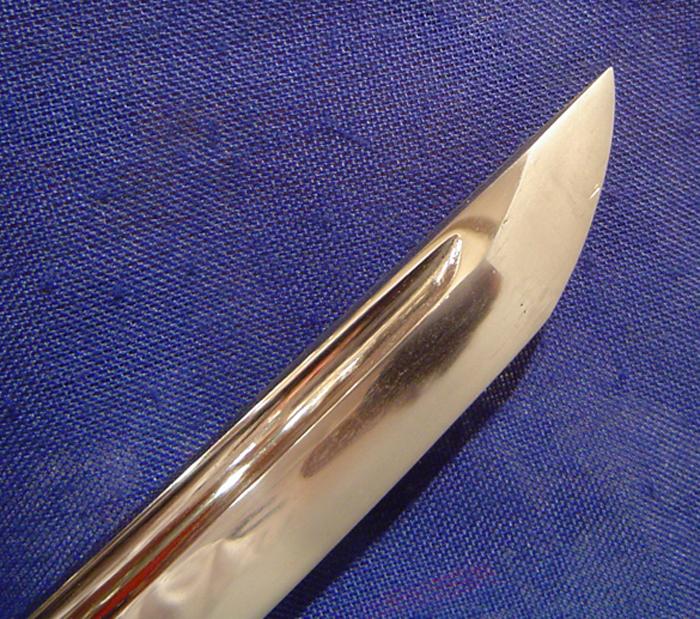A Beautiful Koto Katana With Full Length Hi Blade Fuller, Circa 1500. Around 500 Years Old
This is a beautiful Katana that has a simply superbly beautiful blade with amost elegant curvature and a beautiful notare based choji hamon with crabclaw. It has 3 mekugi ana peg holes in the tang, which is a sign of a really early sword. With a full suite of matching original Edo period koshirae with matching kojiri, and long gold folded fan menuki. Original Edo period silk wrap tsukaito. It shows beautiful activity in the hamon. A very nice early iron tsuba with open piercing. 27.25 inch blade length, tsuba to tip. The saya scabbard has superb dark brown ishime stone finish lacquer.
A samurai was recognised by his carrying the feared daisho, the big sword daito, little sword shoto of the samurai warrior. These were the battle katana, the big sword, and the wakizashi, the little sword. The name katana derives from two old Japanese written characters or symbols: kata, meaning side, and na, or edge. Thus a katana is a single-edged sword that has had few rivals in the annals of war, either in the East or the West. Because the sword was the main battle weapon of Japan's knightly man-at-arms (although spears and bows were also carried), an entire martial art grew up around learning how to use it. This was kenjutsu, the art of sword fighting, or kendo in its modern, non-warlike incarnation. The importance of studying kenjutsu and the other martial arts such as kyujutsu, the art of the bow, was so critical to the samurai, a very real matter of life or death, that Miyamoto Musashi, most renowned of all swordsmen, warned in his classic The Book of Five Rings: The science of martial arts for warriors requires construction of various weapons and understanding the properties of the weapons. A member of a warrior family who does not learn to use weapons and understand the specific advantages of each weapon would seem to be somewhat uncultivated. This fine samurai sword, like all true and original samurai swords, would have been the prize possession of every samurai that owned it. It would most likely have cost more than his home, and would certainly have been more important.
This is just one reason why fine Japanese sword steel, even of this tremendous age, is in such good state of preservation. When a katana such as this has been, for its entire existence, so highly revered, treasured and appreciated, it will have been cared for most sensitively and treated with the utmost respect during its entire life. In many regards it will have represented the only thing that stood between its samurai owner, of which there may have been 30 or more during this swords great history, and his ultimate downfall in a combat situation. The late Muromachi period was a time of continuous upheaval and war. The demand for swords was high and they needed to have excellent cutting ability. As such, Sukesada swords from this time that have survived to this day can be fine pieces.
Code: 23408










